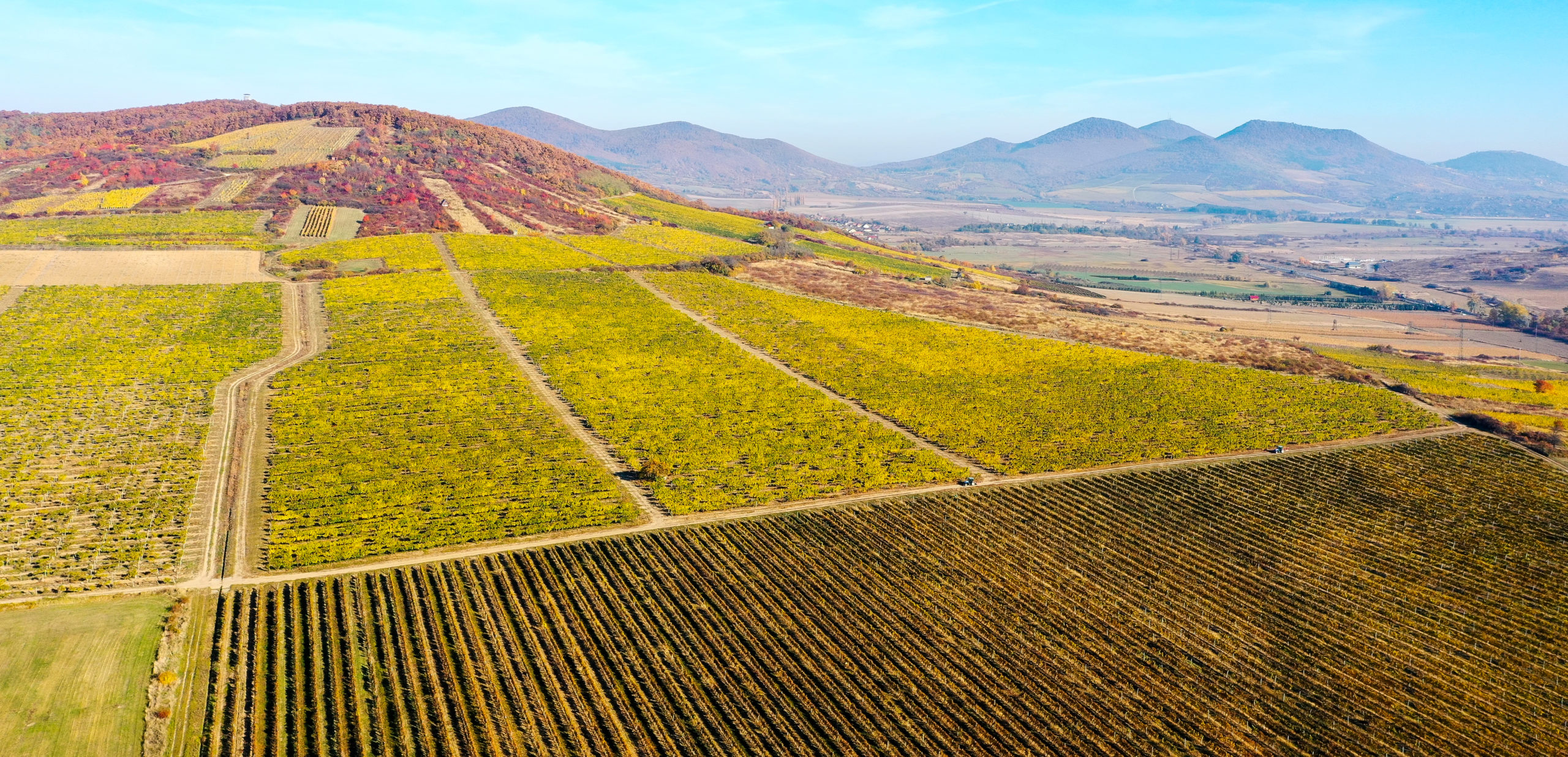Megyer Vineyard
A sárospataki Megyer-dűlő a Tokaji Borvidék egyik legkorábban dokumentált dűlője, melyet írásos emlékek először 1324-ben említenek „vinea in monte Meger” formában.
History
Megyer Hill was already planted with vines in the Árpád Age (9-14th century) as proven by the 1248 Béla IV’s deed of gift in which he gifted the Megyer Hill vines to the Premonstratensian Order of Saint Martin. The extensive vineyard generally had several owners. In 1354 a Sárospatak noble left his large area to the Pauline monastery of Saint Giles in Sátoraljaújhely.
Monastic ownership continued until 1526 when the influential aristocratic landowning Perényi family occupied the land and pushed out the previous monastic owners. Following the early end of the noble Perényi line, the land was owned to other aristocrats before it passed to the Lórántffy dynasty in 1596. Zsuzsanna Lórántffy managed the vineyard until she gifted it to the Reformed College in Sárospatak in 1644.
During the Counter Reformation the majority of the land was given to the Jesuit monastery in Sárospatak or returned to the Paulines in Sátoraljaújhely. Smaller parcels were part of famous historical family estates.
After the dissolution of the Jesuit order in 1773, their areas of vineyards became part of the Sárospatak Reformed church and thus owned by the Reformed College. his ownership structure remained right up until 1950 when the vineyard became state property as part of the Communist takeover. It remained in state hands until 1992.
Origin of the name
The name is most likely to be connected to the Megyer tribe who occupied this foothill area during the Conquest of Hungary.

Aspect and soils
The 110-hectare south-, southeast-facing Megyer dűlő has colourful rhyolite tuff bedrock rich in volcanic minerals with clay, crumbly, forest soils. In the friable topsoil the volcanic bedrock mixes with the top layer so the vine roots reach deep down and are thus able to take up more nutrition. As the soil has good water retention, dry periods influence crop quality to a lesser extent.
Climate
The gently sloping hillside has no natural boundary so the northern wind passes through easily. The number of sunshine hours is low, as is the humidity. Grapes ripen late and become aszú berries more slowly in this cool vineyard; the climate is best suited to making dry wines with high dry extract.

Aspect and soils
The 109-hectare south-, southeast-facing Megyer dűlő has colourful rhyolite tuff bedrock rich in volcanic minerals with clay, crumbly, forest soils. In the friable topsoil the volcanic bedrock mixes with the top layer so the vine roots reach deep down and are thus able to take up more nutrition. As the soil has good water retention, dry periods influence crop quality to a lesser extent.
Climate
The gently sloping hillside has no natural boundary so the northern wind passes through easily. The number of sunshine hours is low, as is the humidity. Grapes ripen late and become aszú berries more slowly in this cool vineyard; the climate is best suited to making dry wines with high dry extract.
Viticulture
Most vines on the 63-ha sloping hillside were planted 1968-1974. We started the gradual replanting of the Furmint vines in 2021.
Slightly over 90 % is traditional Tokaj grape varieties: Furmint (24 ha), Hárslevelű (23 ha) and Sárgamuskotály (10 ha); while the remaining nearly 10 % includes international variety Chardonnay (6 ha).
Slightly over 90 % is traditional Tokaj grape varieties: Furmint (24 ha), Hárslevelű (23 ha) and Sárgamuskotály (10 ha); while the remaining nearly 10 % includes international variety Chardonnay (6 ha).
Wines that come from here…
…have high dry extract, outstanding minerality and unparalleled complexity.
The terroir is most suited to making dry wines, but in some vintages the vines here produce wonderful raw material for sweets.
The rhyolite silicified soils give wines from Megyer a slightly salty, mineral note. Thanks to the longer ripening process and later harvest the acids remain in the wine; the dry extract is more distinct, the alcohol is higher. Wines from here are usually made with barrel fermentation and aging.
Land
110ha
Production area
63ha
Number of vines
2900 vines/ha
Vine stock's load
1-1.2 kg/vine
Cultivation method
Medium high
(90cm)
cordon
Cultivated grape varieties
Furmint, Hárslevelű Yellow Muscat Chardonnay



